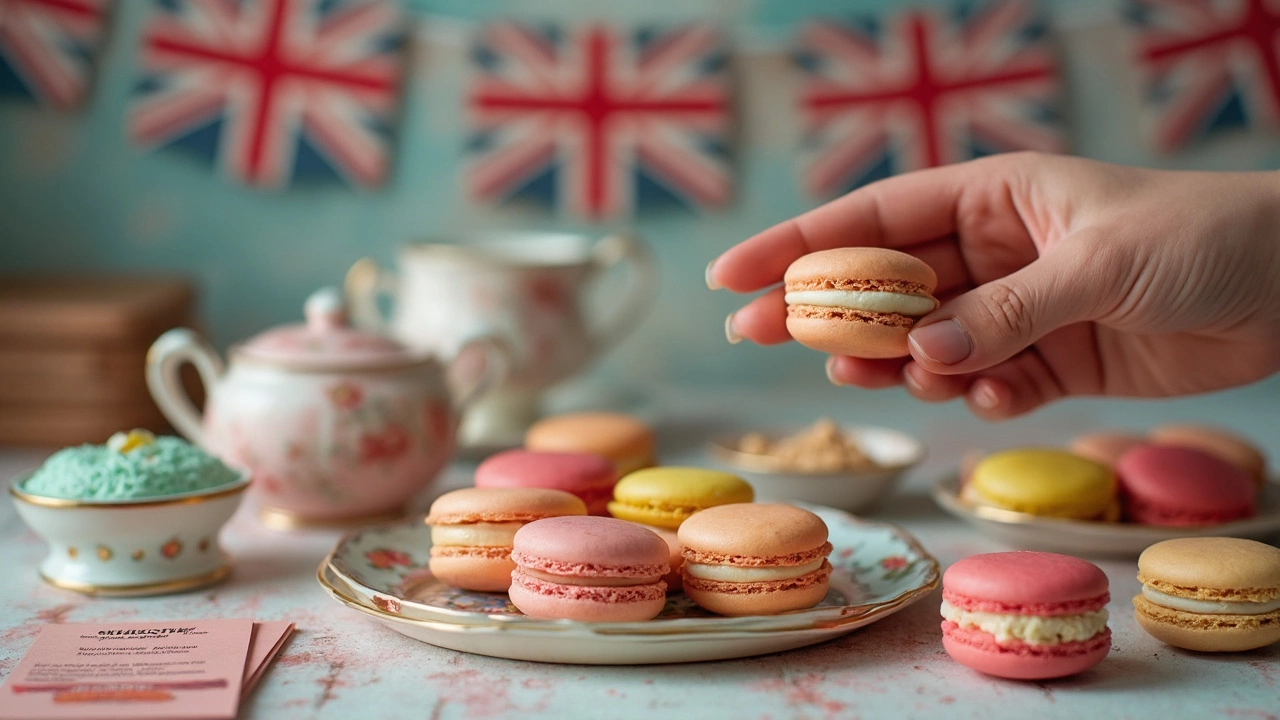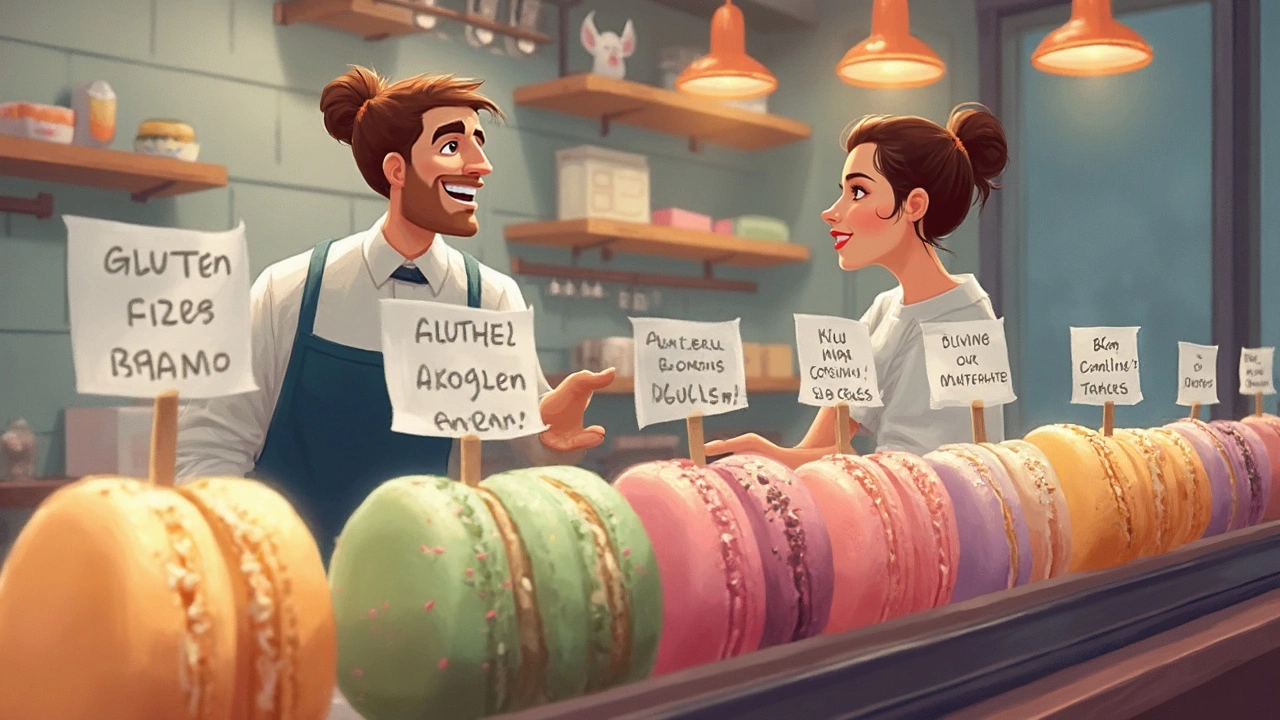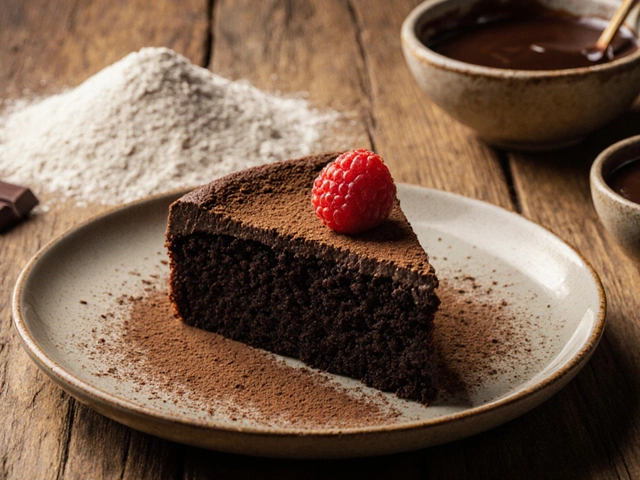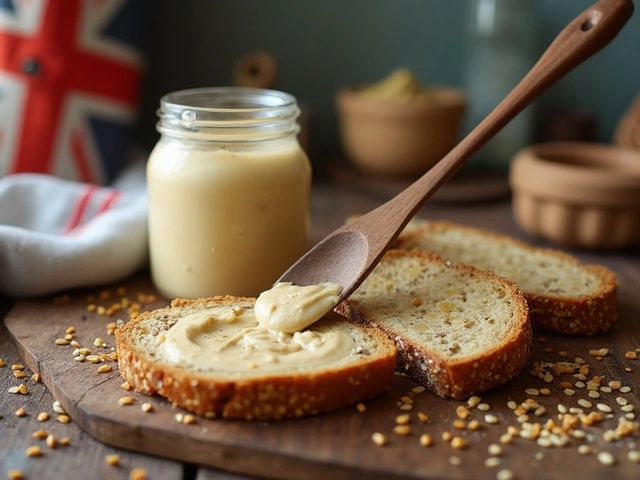
Have you ever stood in front of a bakery window, eyeing those colorful macarons and wondering if you can actually eat them without reacting to gluten? You're not the only one. The short answer is: yes, traditional French macarons are made without wheat flour. They're typically crafted from almond flour, powdered sugar, and egg whites. That combo makes them naturally gluten-free—at least, in theory.
But there's a catch. Not every macaron in every shop is automatically safe for people with celiac or gluten sensitivity. Sometimes, bakeries swap in sneaky ingredients or they bake everything in the same space, which can lead to cross-contamination. So, how do you spot a safe macaron? How do you dodge the hidden gluten traps and actually treat yourself? Let’s break it down step by step. You’ll be able to walk into any bakery (or whip up a batch at home) with a lot more confidence.
- What’s Actually in a Macaron?
- How Safe Are Store-Bought Macarons?
- Avoiding Cross-Contamination
- Tips for Gluten-Free Macarons at Home
What’s Actually in a Macaron?
If you’re scanning bakery labels for gluten-free treats, macarons might look like a safe bet—but only if you know what goes into them. Authentic French macarons have a super simple ingredient list. No wheat, no barley, no rye. Just a few basics:
- Almond flour: This is the main ingredient in macarons, giving the cookies their delicate, nutty flavor. It’s naturally gluten-free.
- Egg whites: Whipped to stiff peaks, egg whites are the secret behind that airy, melt-in-your-mouth bite.
- Powdered sugar: Adds sweetness and structure. Most powdered sugars are gluten-free, but always check labels; some brands add starch from wheat.
- Granulated sugar: Stabilizes the whipped egg whites.
- Food coloring and fillings: Here’s where it gets tricky. Fillings like ganache, jam, or buttercream are usually safe, but anything different (like cookies and cream or weird bakery specials) could add gluten.
So, the classic macaron recipe is built to be naturally gluten-free. Yet, cross-contamination and fancy flavors can trip you up. “Traditional macarons don’t require any wheat ingredients at all, but bakers need to be careful to avoid contact with gluten-containing products,” points out the European Celiac Society in their allergy-friendly baking guide.
"Real French macarons, when made the classic way, are truly gluten-free. It's the modern twists that sometimes sneak in risky ingredients, so label reading is crucial." – European Celiac Society
Don’t forget about fillings—caramel, fruit jams, and chocolate ganache are fine, but things like cookie dough, cake pieces, or even some flavored syrups might have gluten. If you ever see a macaron flavor that sounds like your favorite dessert (think: tiramisu or brownie batter), double check the ingredients or ask the baker.
Here’s a quick look at the basic macaron ingredients:
| Ingredient | Usually Gluten-Free? |
|---|---|
| Almond Flour | Yes |
| Egg Whites | Yes |
| Powdered Sugar | Usually (check label) |
| Granulated Sugar | Yes |
| Food Coloring | Yes (unless wheat-based) |
| Fillings | Depends |
So, for anyone craving that colorful, chewy goodness, classic macarons are a strong pick on a gluten-free cakes table—as long as you watch out for sneaky add-ins or bakery shortcuts.
How Safe Are Store-Bought Macarons?
With macarons popping up at grocery stores, fancy patisseries, and even coffee chains, it's smart to pause before you dig in. While the basic recipe for macarons is usually gluten-free, the real world is messy. Not every store-bought box is safe if you have celiac disease or are serious about avoiding gluten.
Bakeries sometimes add extra flavors, mix-ins, or colorings that might contain gluten. A classic example? Cookies & Cream macarons—with cookie bits that are almost never gluten-free. Some companies use wheat-based thickeners in their creams or fillings. Even regular flavors like chocolate, pistachio, or raspberry can surprise you if the filling isn't pure.
The biggest risk is cross-contamination. Lots of bakeries make everything—baguettes, cakes, macarons—in the same kitchen. If the surface or mixer hasn’t been cleaned well, gluten particles could end up in your treat. Even brands that label their macarons as gluten-free sometimes add a disclaimer for trace amounts of wheat.
- Always check the ingredient list and any "may contain" statements on the packaging.
- Look for third-party certification, like the GFCO logo, which means the product has been tested for gluten.
- If you’re at a bakery, ask staff about the prep process. Can they guarantee no cross-contact with wheat?
| Brand | Labelled Gluten-Free? | Dedicated Facility? |
|---|---|---|
| Ladurée | No | No |
| Pierre Hermé | No | No |
| Whole Foods (In-House) | Varies by location | No |
| Sucré | Yes | Yes |
One tip—grab individually wrapped gluten-free macarons if you can find them. These are less likely to be contaminated in transit or display cases. Famous chains like Ladurée and Pierre Hermé don’t guarantee gluten-free status, but some smaller brands or specialty stores do offer safer options. Online shops with dedicated gluten-free bakeries are usually your best bet if you’re super sensitive.

Avoiding Cross-Contamination
So here's the tough part: even if a basic macaron recipe doesn’t use wheat, cross-contamination can still ruin things for those who are seriously gluten-free. Shared kitchen tools, mixer bowls, or even a tiny bit of wheat flour in the air can end up sneaking into your colorful treats. That’s why you have to pay attention to where and how your gluten-free desserts are made.
If you’re buying macarons at a bakery or grocery store, don’t be shy—ask the staff about their set-up. A lot of small bakeries bake everything in one spot, so even their "gluten-free" offerings might not be totally safe if you have celiac. According to the Celiac Disease Foundation, "Even a crumb of gluten can trigger a reaction in people with celiac disease. Always confirm with the manufacturer or bakery about their cleaning protocols and ingredient sources."
"Cross-contact is a major concern. Always double-check if utensils, mixers, and surfaces are gluten-free designated," advises the Celiac Disease Foundation.
Here are some easy ways to lower your risk of cross-contamination at home or when shopping:
- Look for dedicated gluten-free bakeries or brands, especially ones that are certified by trusted organizations.
- If you bake at home, set aside mixing bowls, spatulas, and baking sheets that are only for gluten-free recipes. Labeling them helps.
- Ask bakeries if their macarons are made and packaged in a completely separate area from regular baked goods. Separate storage helps too.
- Pay extra attention to fillings. Most basic shells are fine, but fillings like cookies-and-cream or cake-batter can hide wheat flour or cookie crumbs.
Did you know? According to a 2023 survey by Beyond Celiac, about 61% of people with celiac disease reported being "glutened" at least once from products labeled gluten-free due to cross-contamination.
If you ever feel like you’re being too picky, remember you’re just looking out for your health. A safe treat is always worth a couple of extra questions. My advice? When in doubt, try making gluten-free macarons at home—you control every step, and Whiskers can keep you company in the kitchen (just not in the mixing bowl).
Tips for Gluten-Free Macarons at Home
If you want total control over what goes into your macarons, making them at home is the way to go. It's easier than you'd think, and there are a few hacks to keep your treats really gluten-free. Let’s look at what actually matters.
- Use almond flour labeled gluten-free: Not all almond flour is created equal. Always check the bag for a gluten-free label. Some brands process nuts on the same machines as wheat, and that’s a problem if you’re avoiding gluten.
- Pick the right powdered sugar: Believe it or not, some powdered sugars use wheat starch to prevent clumping. Look for ones that use cornstarch instead, and double-check the ingredient list.
- Clean equipment matters: If you’ve baked regular cookies or cakes before, wash mixing bowls, spatulas, baking sheets, and even your mixer blades really well. Gluten is sticky and sneaky.
- Watch the fillings: Classic chocolate ganache or plain buttercream are safe if made with gluten-free ingredients. But once you start picking commercial jams, flavor pastes, or caramel, always check for fillers or thickeners made from wheat.
Here’s what you need for a reliable gluten-free macaron recipe at home (for about 20 cookies):
- 100g almond flour (certified gluten-free)
- 100g powdered sugar (with cornstarch, not wheat)
- 100g egg whites (about 3 eggs, aged if you want extra smooth shells)
- 100g granulated sugar
- Food coloring (gel type is best, always check it’s gluten-free)
If you're ever unsure about an ingredient, just type the brand name and "gluten-free" into a search bar—most manufacturers list allergen info online now.
Consistency matters when baking macarons. The batter should flow like lava and settle into smooth circles when piped. If it’s too stiff, your cookies won't get those pretty feet. Too runny, and they’ll spread everywhere! It's normal to have a few fails at first; even pro bakers mess up macarons sometimes.
If you bake regularly for someone with celiac, store your almond flour and baking tools separately from anything with gluten. My cat Whiskers is nosy in the kitchen, so I also cover finished cookies until they're packed up—cat fur isn’t gluten, but nobody wants that with their macarons!
Not into baking? Frozen homemade gluten-free macarons hold up well—as long as you keep them in an airtight container. Just thaw for about 15 minutes before serving.
| Common Ingredient | Is It Gluten-Free? |
|---|---|
| Almond Flour | Yes, if labeled gluten-free |
| Powdered Sugar | Yes, if made with cornstarch |
| Egg Whites | Yes |
| Food Coloring | Usually, but always check the label |
The best part? Homemade macarons let you experiment with flavors you can't always find in stores—just make sure every single ingredient fits your gluten-free needs.












Write a comment